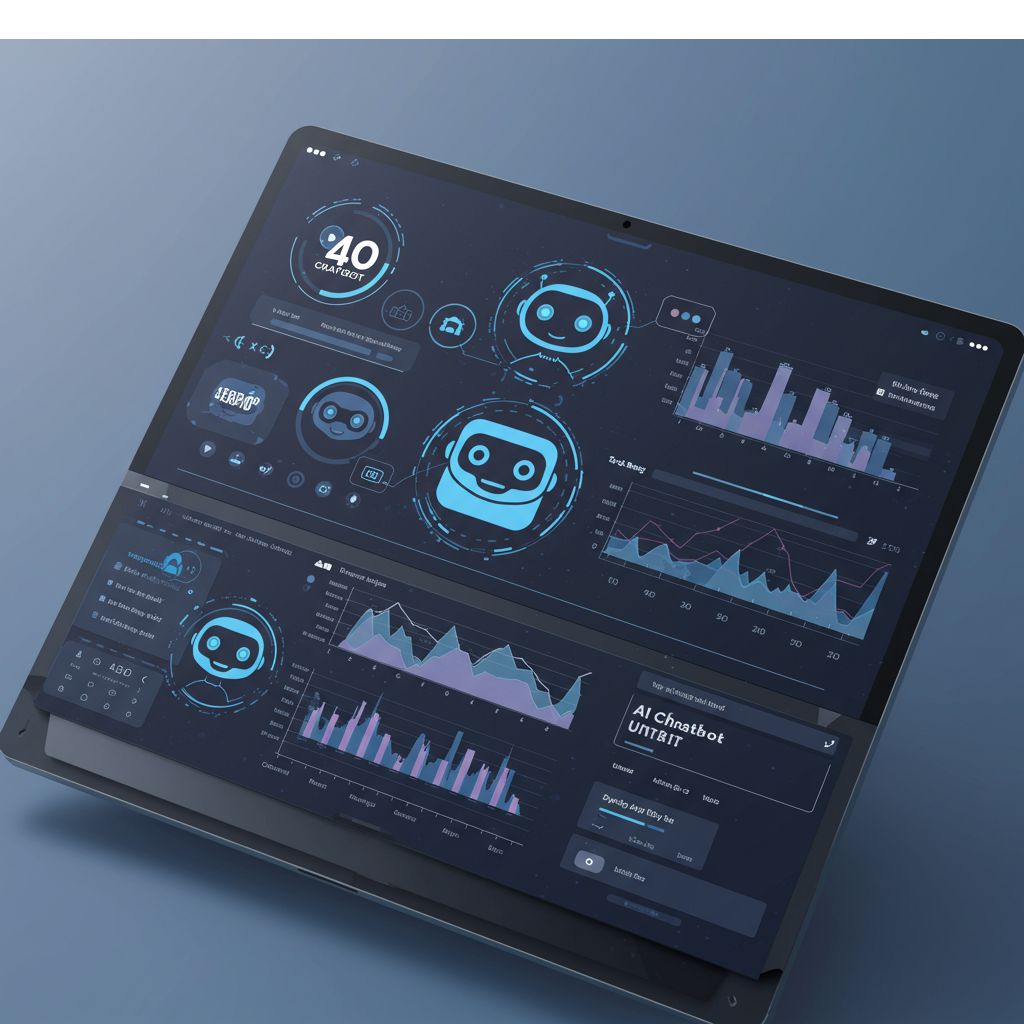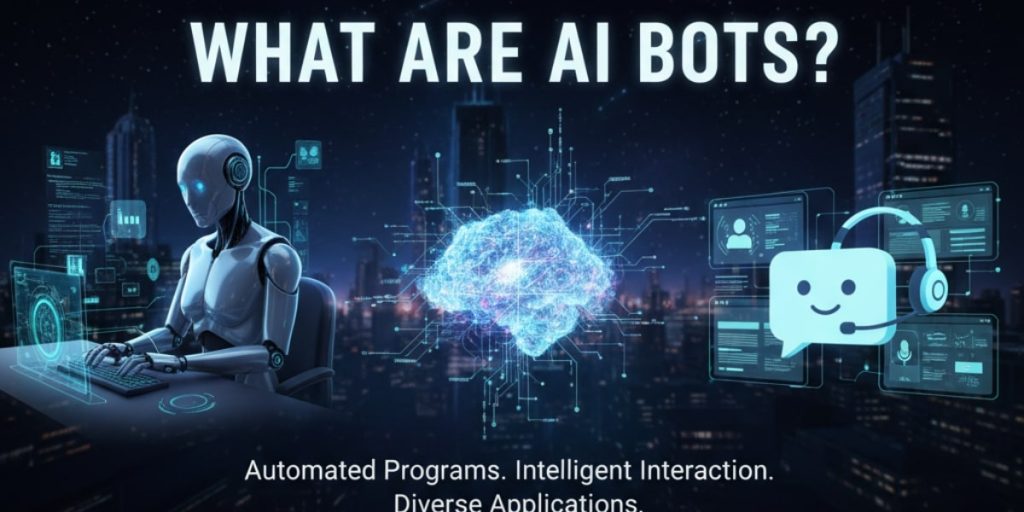
In today’s hyper-competitive digital landscape, brands are constantly seeking innovative ways to engage audiences, drive conversions, and optimize campaigns. One transformative solution that has emerged at the forefront is the use of AI bots. From personalized chatbots to automated messaging flows, AI bots are redefining customer interactions, streamlining marketing processes, and unlocking new avenues for growth. In this post, we’ll explore the strategies and best practices you need to harness AI bots effectively in your digital marketing efforts.
1. What Are AI Bots and How Do They Work?

AI bots, also known as intelligent agents or chatbots, are software applications powered by artificial intelligence and natural language processing (NLP). These bots can understand user inputs—whether text or voice—process intent, and provide relevant responses or actions. The core components include message interpretation (leveraging NLP), dialog management (state tracking and decision logic), and response generation (template-based or generative). Advanced AI bots also integrate machine learning models that improve accuracy over time by analyzing past interactions and feedback.
2. Why AI Bots Matter in Digital Marketing
Digital marketing success hinges on timely, personalized, and contextually relevant communication. AI bots excel at:
- Instant Engagement: They respond to customer queries 24/7 without delays.
- Scalability: From dozens to thousands of simultaneous conversations, bots scale effortlessly.
- Personalization: By leveraging user data and segmentation, bots tailor messages to each visitor.
- Efficiency: They automate repetitive tasks like lead qualification, meeting scheduling, and follow-ups, freeing up human marketers for strategic work.
Incorporating AI bots into your marketing stack can yield higher conversion rates, decreased response times, and richer customer insights.
3. Key Benefits of AI Bots for Marketers
1. 24/7 Availability: Never miss an opportunity—bots engage prospects outside office hours.
2. Cost Efficiency: Reduce labor costs by automating routine inquiries and support.
3. Lead Qualification: Pre-screen visitors through conversational flows that gather intent, budget, and timeline.
4. Data Collection: Seamlessly capture contact details, preferences, and feedback directly in your CRM.
5. Multichannel Outreach: Deploy bots on websites, social media platforms, messaging apps, and email for cohesive campaigns.
4. Real-World Use Cases in Digital Marketing

AI bots shine across various marketing touchpoints:
- Lead Generation: Interactive quizzes and conversational landing pages that gather rich profile data.
- Customer Support: Instant FAQ resolution and ticket creation for common issues.
- E-commerce Assistance: Product recommendations based on browsing history and preferences.
- Event Promotion: Automated reminders, RSVPs, and post-event surveys delivered via chat.
- Content Delivery: Personalized content suggestions, blog updates, and drip campaigns through messenger bots.
These applications drive engagement, improve satisfaction, and uncover actionable insights for future campaigns.
5. Integrating AI Bots into Your Marketing Stack
To ensure a seamless integration:
- Define Clear Objectives: Identify whether the bot’s goal is lead gen, support, upsell, or engagement.
- Choose the Right Platform: Evaluate bot builders (e.g., ManyChat, Drift, Intercom) based on features, integrations, and price.
- Connect Data Sources: Link your CRM, email service provider, analytics tools, and e-commerce platform to unify user data.
- Design Conversation Flows: Map user journeys with decision trees, quick replies, and fallback options for unknown inputs.
- Train & Test: Use real user queries to train the NLP model, then rigorously test edge cases before launch.
6. Best Practices for Effective AI Bot Deployment
– Maintain Brand Voice: Ensure the bot’s tone aligns with your brand personality—friendly, professional, or playful.
– Provide Human Handover: Offer an easy path to a live agent for complex queries.
– Keep Responses Concise: Break lengthy answers into quick, scannable messages.
– Use Rich Media: Incorporate images, GIFs, carousels, and quick-reply buttons to enhance interactivity.
– Monitor & Optimize: Continuously analyze conversation logs to refine intents, responses, and flows based on user behavior.
7. Measuring Success: Metrics & Analytics
Track these KPIs to gauge bot performance:
- Engagement Rate: Percentage of visitors who interact with the bot.
- Completion Rate: Share of conversations that reach a predefined goal (e.g., lead form submitted).
- Fallback Rate: Frequency of unhandled queries–a high rate signals training gaps.
- Conversion Rate: Leads or sales attributed to bot interactions.
- Response Time: Average time from user message to bot reply.
Integrate your analytics platform (Google Analytics, Mixpanel) for deeper funnel analysis and attribution modeling.
8. Case Studies: Success Stories
Case Study 1: e-Commerce Retailer
A fashion retailer implemented a chatbot on their product pages to recommend outfits based on style quizzes. Within three months, they saw a 25% uplift in add-to-cart rate and a 15% increase in average order value.
Case Study 2: SaaS Company
A B2B software provider used an AI bot to qualify website visitors. The bot collected the information needed for sales outreach, reducing lead qualification time by 50% and boosting demo bookings by 30%.
9. Common Challenges and How to Overcome Them
Challenge: Misunderstood Queries. Solution: Regularly update intent models with new phrases and synonyms.
Challenge: Low Engagement. Solution: A/B test welcome messages, call-to-action prompts, and timing.
Challenge: Data Privacy Concerns. Solution: Implement GDPR/CCPA compliance, secure data encryption, and clear privacy policies.
10. Emerging Trends in AI Bots for Marketing
– Voice-Activated Bots: Integration with smart speakers for hands-free brand interactions.
– Multimodal Experiences: Combining text, voice, and visual recognition for richer engagements.
– Hyper-Personalization: Leveraging predictive AI to anticipate needs before users ask.
– Autonomous Marketing: Bots that autonomously adapt campaigns based on real-time performance data.
11. Conclusion
AI bots are no longer a futuristic concept—they’re a vital component of modern digital marketing strategies. By automating routine tasks, delivering personalized experiences, and providing actionable insights, these intelligent agents empower brands to engage customers more effectively and drive measurable ROI. Follow the strategies and best practices outlined above to build, deploy, and optimize AI bots that elevate your marketing efforts today—and stay ahead as consumer expectations continue to evolve.
Looking to implement automation at scale? Don’t miss our guide:
AI Bots: Strategies for Seamless Integration and Growth — packed with tips to ensure a smooth rollout and long-term success.









Leave a Reply